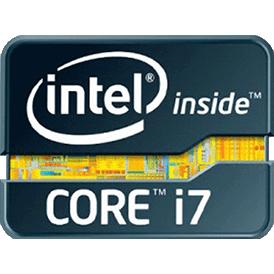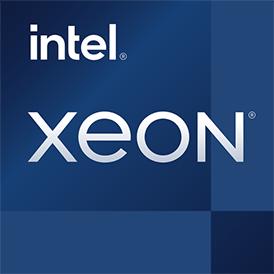 Geekbench 3, 64bit (Multi-Core)
Geekbench 3, 64bit (Multi-Core)
|
|
Intel Xeon E5-2620 v2
6C 12T @ 2.1 GHz
|
26200
|
|
|
Intel Core i7-4930K
6C 12T @ 3.4 GHz
|
22600
|
 Estimated results for PassMark CPU Mark
Estimated results for PassMark CPU Mark
|
|
Intel Core i7-4930K
6C 12T @ 3.4 GHz
|
9402
|
|
|
Intel Xeon E5-2620 v2
6C 12T @ 2.1 GHz
|
8600
|
 Geekbench 5, 64bit (Multi-Core)
Geekbench 5, 64bit (Multi-Core)
|
|
Intel Core i7-4930K
6C 12T @ 3.4 GHz
|
5746
|
|
|
Intel Xeon E5-2620 v2
6C 12T @ 2.1 GHz
|
4812
|
 Geekbench 6 (Multi-Core)
Geekbench 6 (Multi-Core)
|
|
Intel Core i7-4930K
6C 12T @ 3.4 GHz
|
4021
|
|
|
Intel Xeon E5-2620 v2
6C 12T @ 2.1 GHz
|
3643
|
 Geekbench 3, 64bit (Single-Core)
Geekbench 3, 64bit (Single-Core)
|
|
Intel Core i7-4930K
6C 12T @ 3.4 GHz
|
3745
|
|
|
Intel Xeon E5-2620 v2
6C 12T @ 2.1 GHz
|
2350
|
 CPU-Z Benchmark 17 (Multi-Core)
CPU-Z Benchmark 17 (Multi-Core)
|
|
Intel Core i7-4930K
6C 12T @ 3.4 GHz
|
2792
|
|
|
Intel Xeon E5-2620 v2
6C 12T @ 2.1 GHz
|
1770
|
 Cinebench R15 (Multi-Core)
Cinebench R15 (Multi-Core)
|
|
Intel Core i7-4930K
6C 12T @ 3.4 GHz
|
1064
|
|
|
Intel Xeon E5-2620 v2
6C 12T @ 2.1 GHz
|
710
|
 Geekbench 5, 64bit (Single-Core)
Geekbench 5, 64bit (Single-Core)
|
|
Intel Core i7-4930K
6C 12T @ 3.4 GHz
|
780
|
|
|
Intel Xeon E5-2620 v2
6C 12T @ 2.1 GHz
|
604
|
 Geekbench 6 (Single-Core)
Geekbench 6 (Single-Core)
|
|
Intel Core i7-4930K
6C 12T @ 3.4 GHz
|
746
|
|
|
Intel Xeon E5-2620 v2
6C 12T @ 2.1 GHz
|
510
|
 Cinebench R15 (Single-Core)
Cinebench R15 (Single-Core)
|
|
Intel Core i7-4930K
6C 12T @ 3.4 GHz
|
139
|
|
|
Intel Xeon E5-2620 v2
6C 12T @ 2.1 GHz
|
98
|
 Cinebench R11.5, 64bit (Multi-Core)
Cinebench R11.5, 64bit (Multi-Core)
|
|
Intel Core i7-4930K
6C 12T @ 3.4 GHz
|
10.8
|
|
|
Intel Xeon E5-2620 v2
6C 12T @ 2.1 GHz
|
7.6
|

